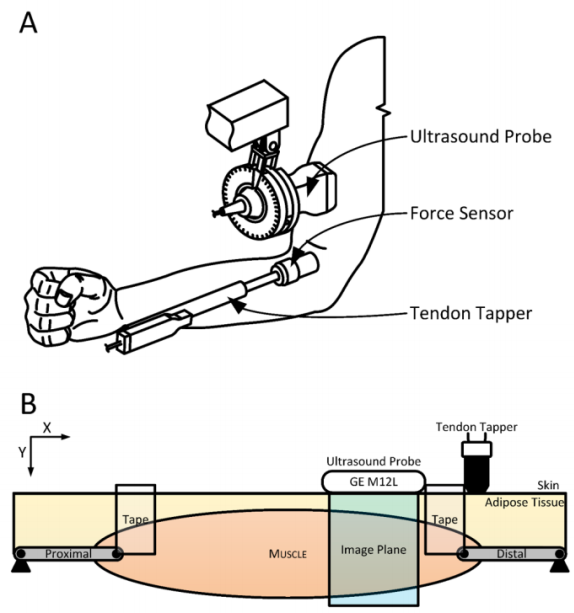
We characterized the passive mechanical properties of the affected and contralateral musculotendon units in 9 chronic stroke survivors as well as in 6 neurologically-intact controls. Using a position-controlled motor, we precisely indented the distal tendon of the biceps brachii to a 20 mm depth from skin, recording both its sagittal motion using ultrasound movies and the compression force at the tip of the indenter. Length changes of 8 equally-spaced features along the aponeurosis axis were quantified using a pixel-tracking protocol. We report that, on the aggregate and with respect to contralateral and control, respectively, the affected side initiates feature motion at a shorter indentation distance by 61% and 50%, travels further by 15% and 9%, at a lower rate of 28% and 15%, and is stiffer by 40% and 57%. In an extended analysis including the spatial location of the 8 designated features, we report that in contrast to the contralateral and control muscles, the affected musculotendon unit does not strain measurably within the imaging window. These results confirm that chronic stroke-induced spasticity changes musculotendon unit passive mechanics, causing it to not strain under stretch. The mechanisms responsible for altered passive mechanics may lie within extracellular matrix fibrosis.

